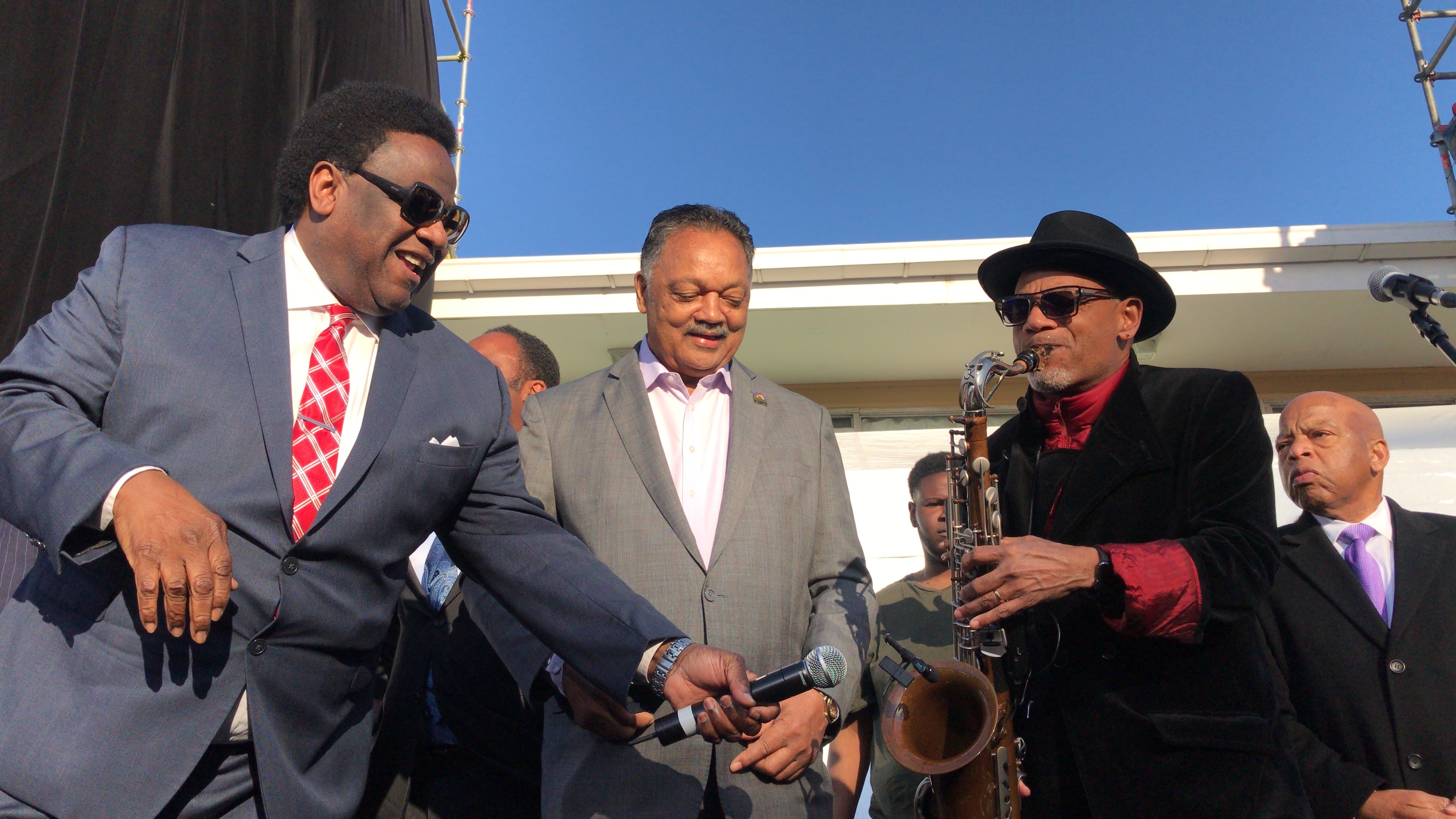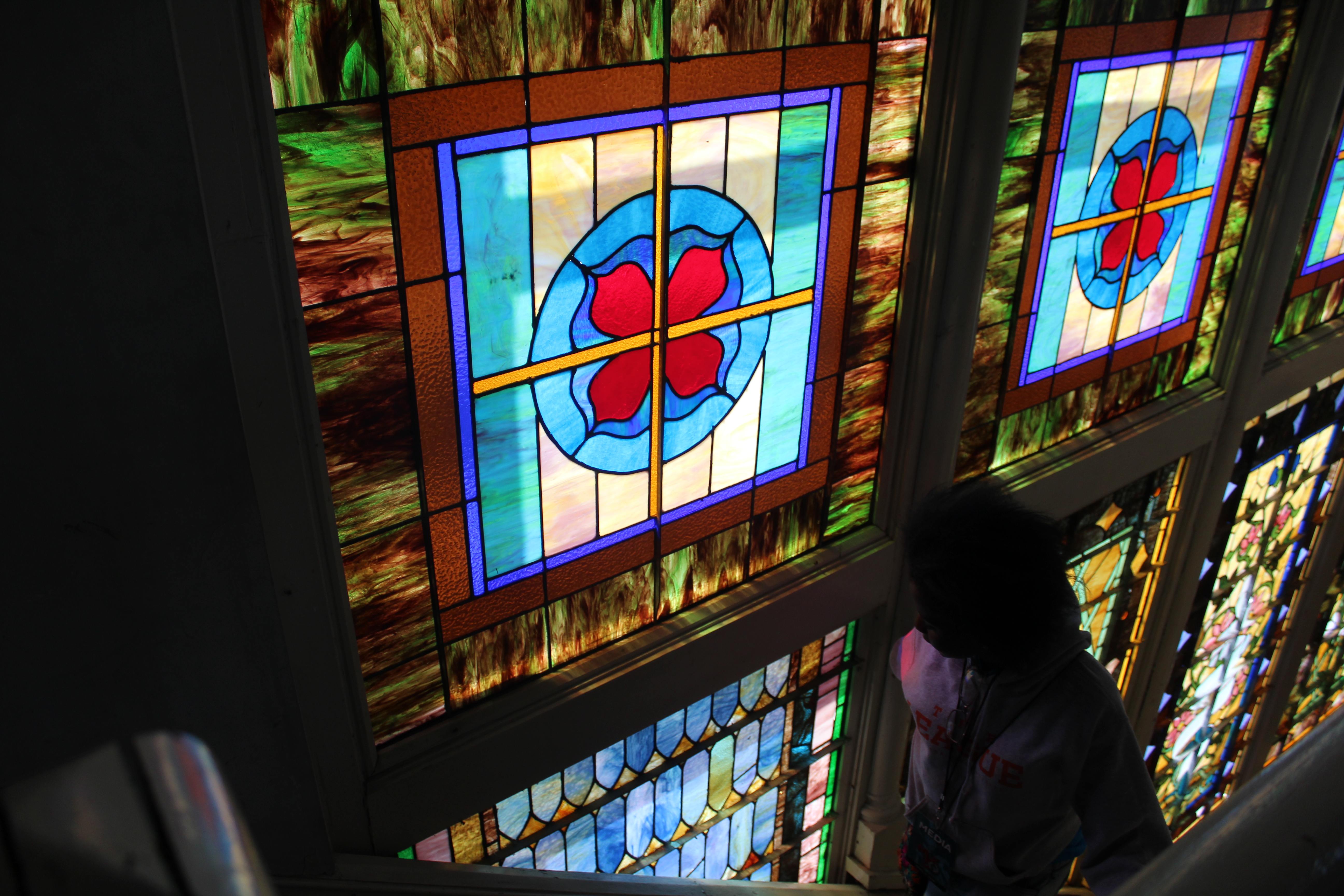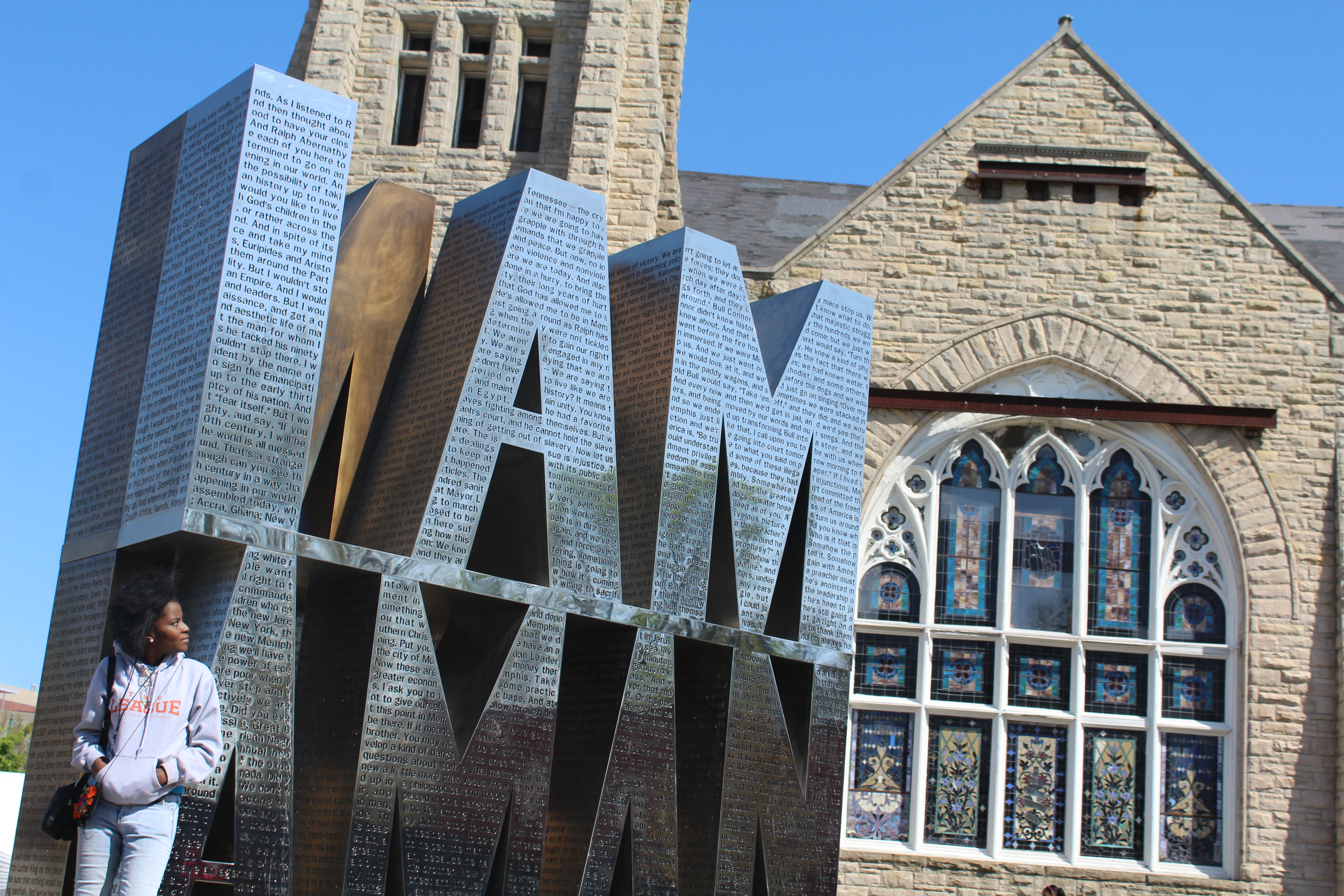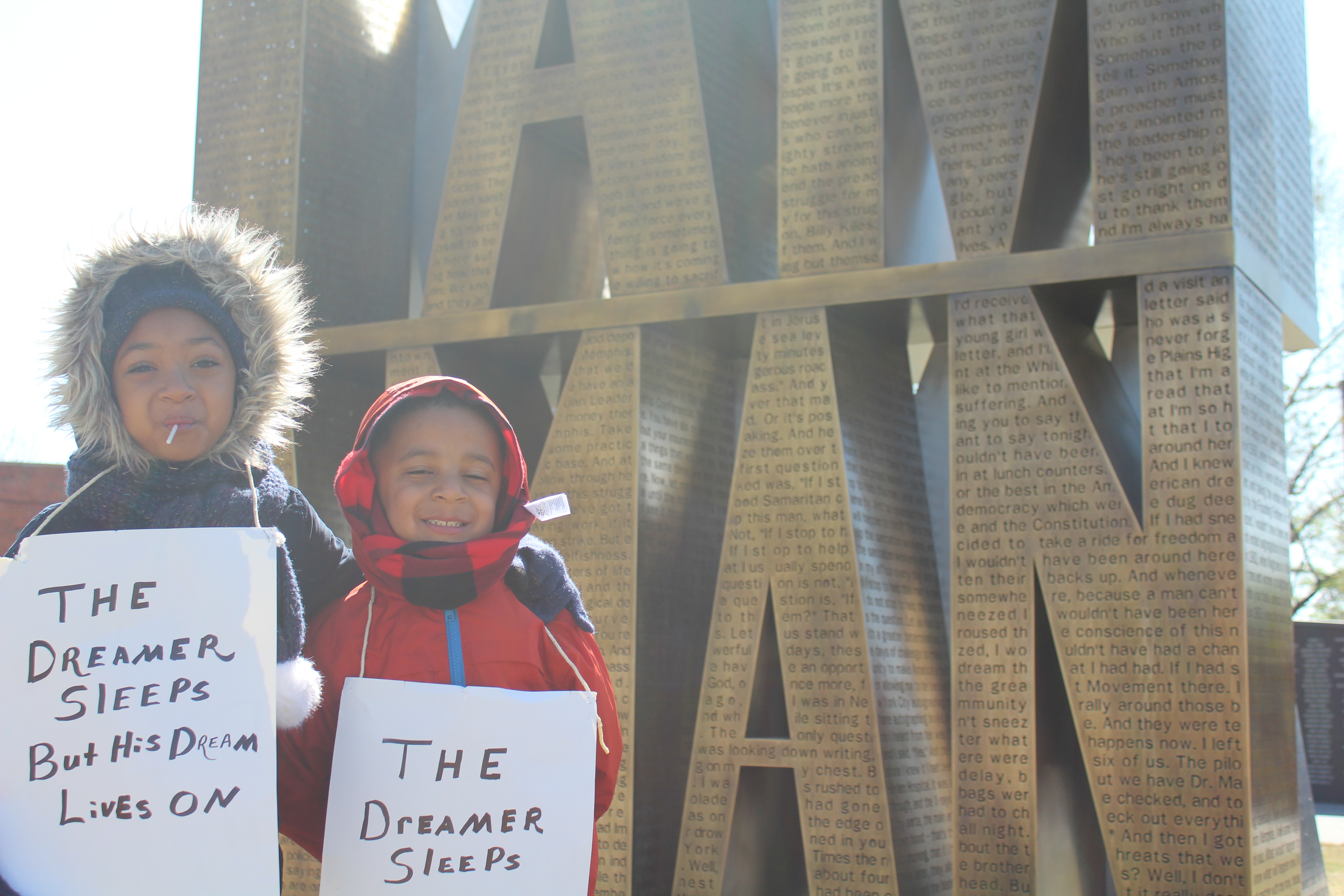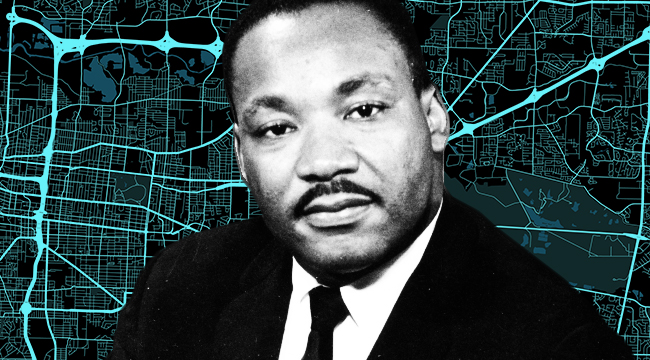
“Memphis froze in place when King got shot.”
The saying is common among native Memphians, and especially the ones who remember the day, the time, and where they stood when they heard the news. Some even go so far as to question whether or not they were partially to blame for the assassination, as Dr. Martin Luther King, Jr. was in Memphis to support sanitation workers who were picketing for better working conditions. What’s undeniable is that the city was profoundly affected that day and was, from that moment on, forever linked with the Civil Right leader’s death.
In the spring, I was invited to visit Memphis to see the unveiling of the MLK50 exhibit at the National Civil Rights Museum and get a taste of how the city has shifted over the decades. Though the assassination of Dr. King is evident just about everywhere, I found that there’s much more to the southern city than that. It’s blossoming in the ways that many American cities are right now: With an emphasis on craft goods, regional foods, and diverse points of view. It’s also home to some absolutely stunning views of the Mississippi River, which is a nice perk. While other cities race to replace the old with the new, Memphis blends modernity with its roots seamlessly, feeling at once hip and modern while holding strong to its connection with history.
On top of all of this, I was struck by the way Memphis has somehow managed to stay connected to the ideals that MLK championed. It’s less that it’s frozen in time and more that they purposely preserved the legacy of the message that one of the most influential Americans in history, delivered during one of the most turbulent times in the nation. As far as city-wide identities go, that’s a damn good one.
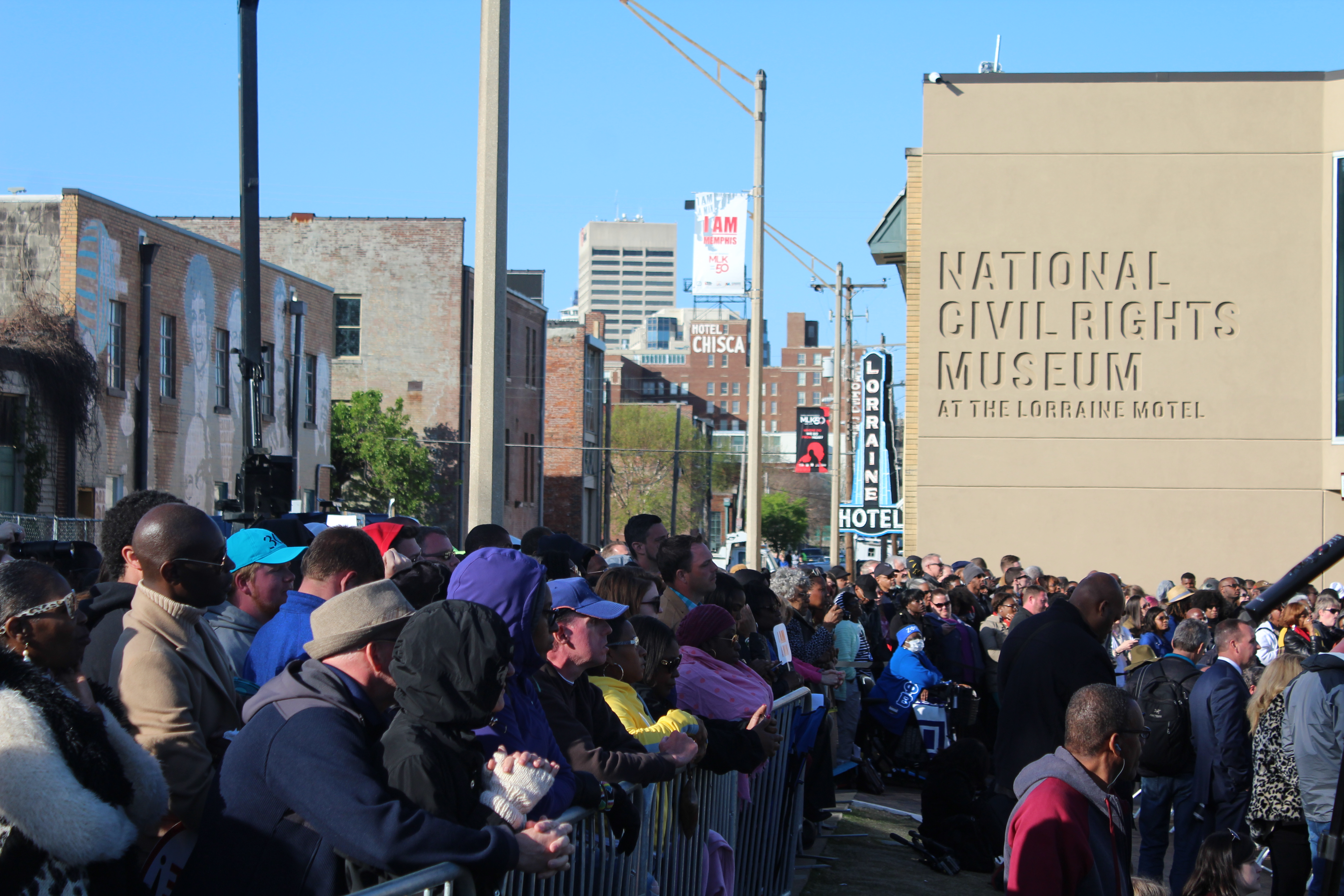
After decades spent deciding what to do with the building after it stopped taking guests, the Lorraine Motel, the site of Dr. King’s assassination, was restored to include the facade of the building from the iconic assassination photo in detail, right down to the two cars that were parked outside of the motel. It expanded in 1991, and is now functioning as the National Civil Rights Museum.
The museum’s mission is to “share the culture and lessons from the American Civil Rights Movement,” and it does so through its exhibitions that examine black history from slavery until now, documentary showings, and at the Legacy Building (across the street from the motel) where visitors learn about the individuals and milestone events that shaped the Civil Rights movement in the United States.
Touring the museum made me remember why I wanted to be a journalist. Many are not aware of King’s tactics to effect change, only crediting him for being an excellent speaker. King, however, was a strategist. He invited the media — journalists, like me — to see firsthand accounts of the opposition activists faced in the South. They would come out with cameras and notepads, recording the emotion and violence that people in other parts of the country were not aware of. Not only did this increase the activists’ influence across the country and give us the faces and names we think of when we hear the term, “Civil Rights,” it helped Americans and foreigners alike realize there was something inherently evil going down in America, and mobilized protesters en masse.
Watching one a video with a crowd of tourists in the museum, I heard an older white lady say, “I don’t remember any of this! How did I not know this was happening?!” At first, I thought her ludicrous, but I slowly realized not everyone owned a television or radio back then, and, if they did, much of what they saw was a very watered-down version of the struggle black Americans were enduring. The world was a much bigger place back then, and it was up to writers and photographers to spread information and help connect people to the movement.
Memphis’s old-meets-new vibe continues on Beale Street — famously known as the “Home of the Blues,” and one of Tennessee’s top tourist attractions. The street boasts the Beale Street Music Festival, B.B. King’s restaurant (the secret one upstairs from his blues club), and multiple clubs and businesses of which the tourist crowd frequent.
While the street is good for those who want to get a quick glimpse of the popular sights and sounds of the city, those who want to really taste the city’s flavor should visit what was one of Dr. King’s favorite restaurants — a dining spot for civil rights leaders after long nights of planning, and today, one of the oldest restaurants in Memphis, The Four Way. Southern food at the restaurant varies from fried chicken to fried green tomatoes to mac and cheese (“if it don’t go in the oven it ain’t real”).
Being a Southerner, I’m always skeptical of when someone tells me a restaurant sells great soul food because I’m not convinced that it can be made at scale. The Four Way fights this by keeping things small. Everything is cooked to order, just like ya granny would, and the resulting taste is as flavorful as the restaurant’s location in “Soulsville.” I experienced fried chicken in a way that I never have before. I won’t say it was better than my mama’s or granny’s, but it definitely did something different to my spirit. Coupled with the fried green tomatoes, it felt like a big family reunion.
Note: If you’re lucky, the owner will come out and tell you some pretty cool stories about the people who have eaten there, the restaurant’s humble beginnings, and how they randomly ended up in a Drake video.
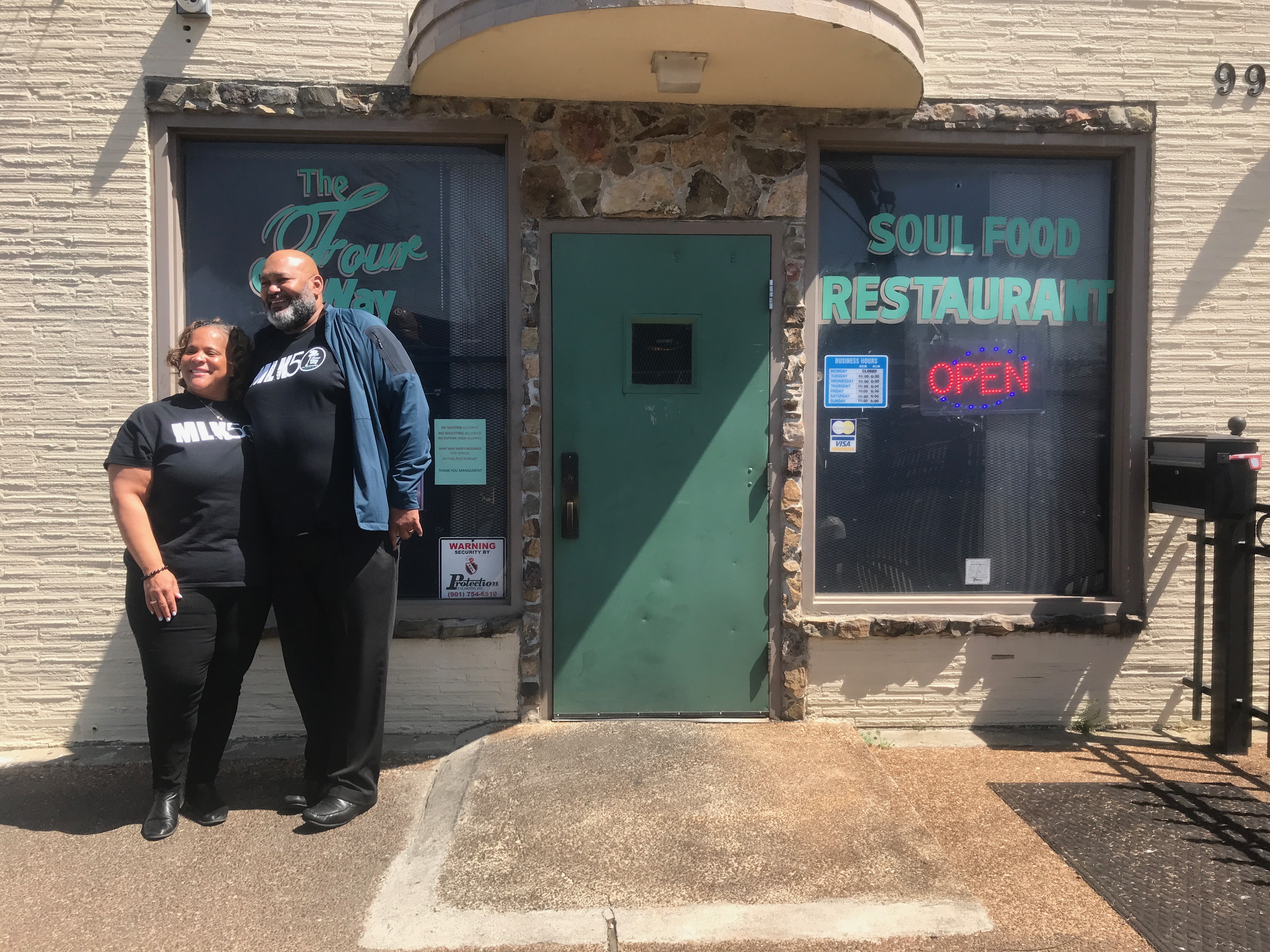
Like many Southern towns, people come to Memphis to experience a calmer way of life, which is often reflected in the city’s native music. When people think “Memphis music,” of course, they think of Elvis, the blues, and Beale Street. The sound of the ’50s and ’60s is often associated with Motown, but Memphis had its own sound going during that entire time with Stax Records. It’s said that soul music is a mixture of gospel and the blues, and Stax specialized in that sound. Artists like Isaac Hayes, Aretha Franklin, Sam & Dave, Otis Redding, and The Staple Singers all came out of what was a tiny label that grew from a record store.
In that era, Memphis was one of the few places in the United States at the time that transcended the unspoken rules of race — with multiracial groups like Booker T. & the MG’s leading the way as the house band, and showing the rest of the world that music knew no racial boundaries. A pillar in the community and an example of racial harmony, even after riots erupted in the neighborhood and devastated white businesses, the white-owned record label went unscathed.
If you visit the Civil Rights Museum, get your soul food fix, and still have an appetite for history, you’d be wise to visit the Stax Museum, where Stax Records once stood. A trip gives a unique perspective of the role music played in Memphis before, during, at after the Civil Rights movement and the King assassination, at which time the label began to “give a damn” about what was happening in the rest of the country, producing songs like “I’ll Take You There” by The Staple Singers.
During the time that Stax Records was flourishing, the Lorraine Motel was a black-owned business where people of all colors — including the Stax musicians — would take breaks together to escape the heat of the sweltering studio which, at the time, had no air conditioning. After King’s death on April 4, 1968, however, racial tensions grew as the assassination bred distrust among blacks and whites, the former not knowing if the murder was a reflection of how whites truly felt, and the latter not knowing if blacks would seek revenge.
With Otis Redding’s death in a plane crash in 1967 and the King assassination in ’68, Stax was headed toward closure in a hurry and was completely insolvent by 1975.
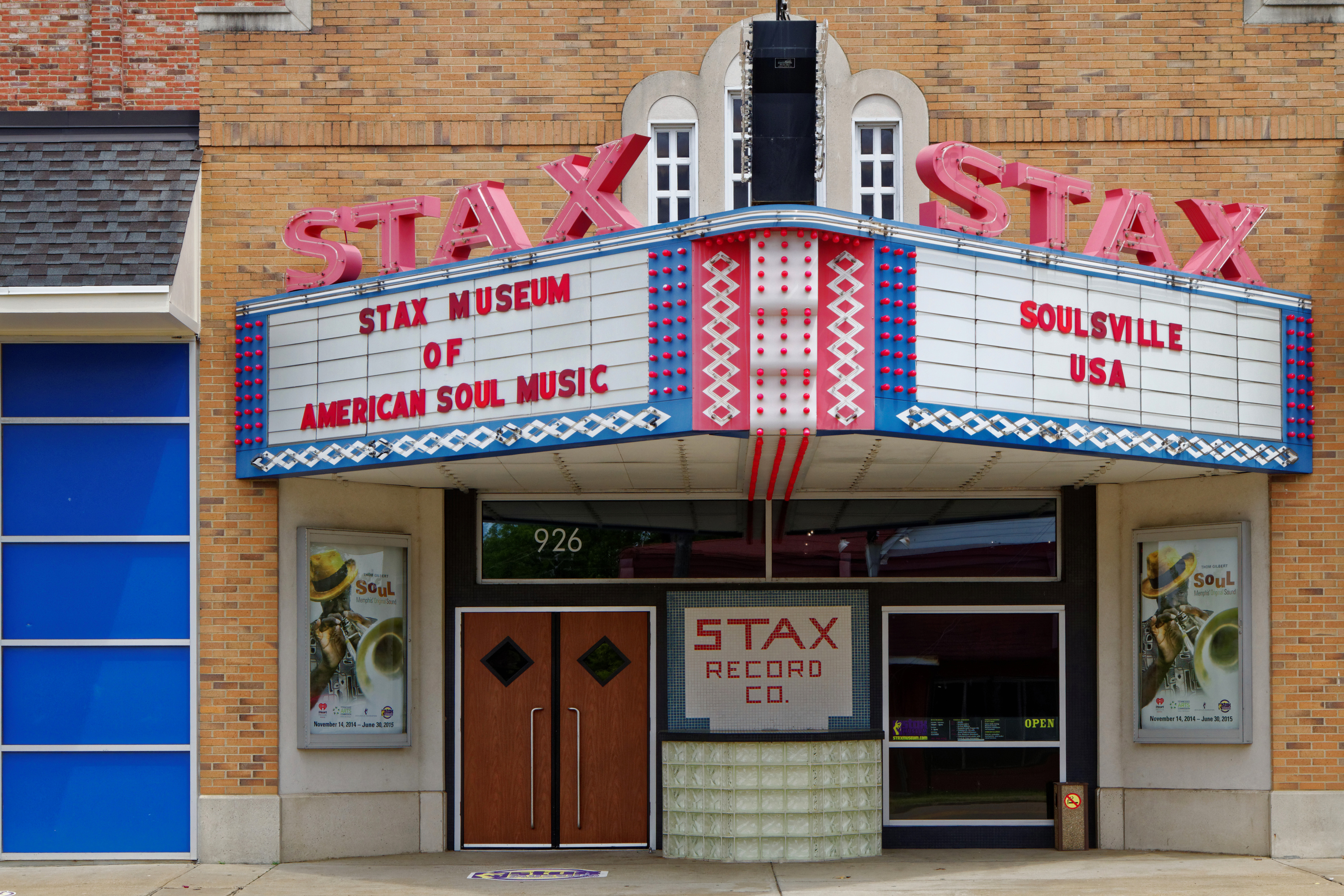
To their credit, Memphians of all races are working to push back the cloud of racial unrest and shed light on their city with resurgent food and art scenes, and by reinforcing the city’s famed cultural elements. Perhaps the most easily identifiable outgrowth of blending history with the past was April’s MLK 50 celebration.
The chance to honor Dr. King’s legacy filled the city with famous faces, civil rights leaders, spectators, and, most importantly, the faces of the new generation of Memphians — optimistic for the future of the city. Reverends Jesse Jackson, Sr. and James Lawson and Rep. John Lewis were among notable speakers who knew Dr. King personally and spoke at the event, Jackson giving a chilling recount of the moment King was shot in front of his room at the Lorraine Motel and an invocation for the future.
“…then he said, around 5:45, ‘Jesse, you’re late,’ that was down about where the rails [on the balcony of the motel] are, [I said] ‘Doc, you’re an hour late…but it’s alright’ [He said] ‘Jesse you’re not even prepared, you don’t even have on a shirt and tie.’ [I said], ‘Doc, the prerequisite for eating is an appetite, not a tie.’ And we laughed, and we looked down and saw Ben Branch setting up and [Dr. King] said ‘Please play my favorite song tonight, Precious Lord, on the saxophone, and he raised up, and the bullet hit him right here — pow! –and knocked him against this door. Upon impact, it severed his tie. It hit him right in the neck. I’m convinced he never felt the pain. He was dead on impact. Reverend [Ralph] Abernathy came out and said, ‘Back up, this is my friend Martin. Martin, you can’t leave us now, we need you. You can’t leave us. You can’t…’ I got up and went to the room, 305, my room, and called Mrs. King and said to her, ‘Dr. King has been shot, I think, in the shoulder.’ I was hoping against hope, but I knew better. I just couldn’t say what I had actually seen. She got the call a few minutes later that said he was dead. But friends, the bad news is, he was dead then but the balcony does not have the last word. My brothers and my sisters, if Atlanta is his Bethlehem, and Mason Temple Church of God in Christ is his Gethsemane, then this is his Calvary, and not far from Calvary is resurrection. From this balcony, we decided we would not let one bullet kill a movement. From this balcony…in 40 years, we went from the balcony at the Lorraine Motel to the balcony overlooking the White House…from this balcony at the Lorraine Motel to the balcony in the White House was 40 years in the wilderness. My friends, today, the hope is in the resurrection…”
Resurrecting Memphis seems to be exactly what the young people there plan to do. The burden on Memphis is not one of shame, it’s one of “What do we do now?” Older Memphians are looking to the younger ones to lead the way, just as the young people led the Civil Rights movement of the 1960s. Instead of focusing on Elvis, Beale Street, and barbecue to deflect from what could have been a permanent stain on the city’s name, some of the younger Memphians, both native and transplants, plan to start the resurrection with the revival and popularization of the city’s arts and culture, both old and new.
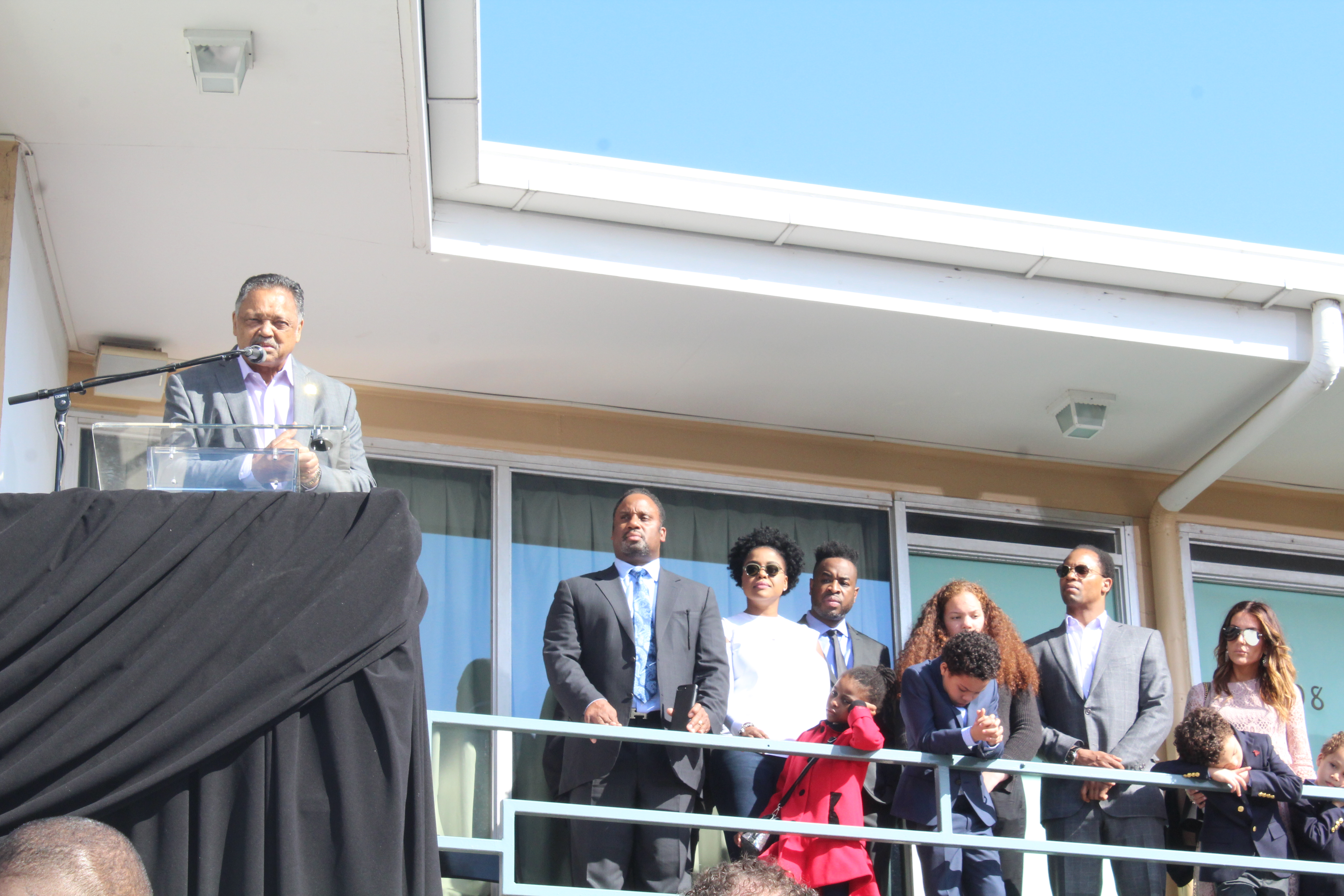
One millennial Memphian I spoke to who is intent on taking the lead in restoring her city to its full potential is Rachel Lynette Knox, Program Officer at Hyde Family Foundation, a Memphis-based organization that “focuses support on high-impact programs that develop new knowledge, improve public policy, nurture civic creativity, strengthen institutional foundations and engage the public.” According to Knox, the city’s energy is undeniable. She said of her hometown:
“Even the perpetual pessimist have to admit in the words of Dr. King, ‘Something is happening in Memphis.’ From our arts and culture scene to tackling out social issues there are people in Memphis working. In politics, we are seeing a wave of younger progressive candidates who are willing to fight for a more progressive city that prioritizes the well-being of our citizens especially those most vulnerable populations including our children and the elderly. The indomitable spirit of these candidates, and many like them, prove that there is something new afoot in Memphis.
If the passion that Knox feels about her city is any indication of the fervor in which she and others like her plan to tackle the city’s renaissance, we can be sure that in the coming years, Memphis will show the United States and the world that it has never lost its place as one of the most influential cities. It’s returning to that same prominence again — not in spite of its past but partially because of it and because the city’s young, eclectic, diverse residents are able to spin the history into something new and exciting.
